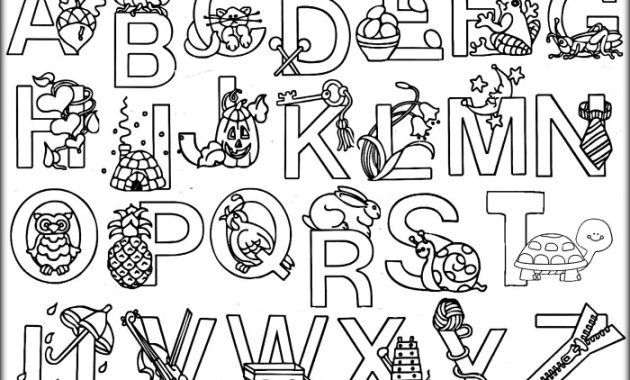Accessibility and Inclusivity: Animal Letter Coloring Pages

Let’s dive into making our animal letter coloring pages accessible and inclusive for every child! Creating materials that cater to diverse needs not only broadens participation but also fosters a sense of belonging and celebrates the uniqueness of each child. This section explores practical strategies to achieve this.Adapting animal letter coloring pages to meet the needs of children with disabilities requires thoughtful consideration and creative solutions.
We need to ensure that every child, regardless of their abilities, can engage with and enjoy these activities.
Adaptive Design for Children with Disabilities, Animal letter coloring pages
Designing inclusive coloring pages involves several key considerations. For children with motor skill challenges, larger print, thicker lines, and pre-printed Artikels with raised textures can significantly improve their ability to participate. For example, instead of thin lines that require fine motor control, we can provide thicker lines that are easier to color within. Raised lines or textured surfaces can aid children with visual impairments or tactile sensitivities.
For children with visual impairments, we can incorporate alternative formats like Braille or raised-line drawings. The use of tactile materials such as textured paper or felt can further enhance the experience. Color choices should also be considered, opting for high-contrast combinations to benefit children with low vision.
Diverse Animal Representation
The importance of diverse animal representation in coloring pages cannot be overstated. Including animals from various habitats, sizes, and species helps children learn about biodiversity and appreciate the richness of the natural world. Depicting animals from different cultures and folklore can also expose children to different traditions and perspectives. For example, instead of solely featuring common domestic animals, we can include less frequently represented animals like pangolins, okapis, or aye-ayes.
This broadened representation fosters a sense of inclusion and combats potential biases. Showcasing animals with varying abilities, such as animals using assistive devices in a playful context, can normalize disabilities and promote understanding.
Guidelines for Designing Inclusive and Accessible Animal Letter Coloring Pages
Creating truly inclusive coloring pages requires a proactive approach. Here are some guidelines to follow:
Designing inclusive coloring pages demands careful planning. Below is a list of essential guidelines:
- Use high-contrast colors: This aids children with visual impairments.
- Offer varied line thicknesses: Thicker lines are easier for children with fine motor skill challenges.
- Incorporate tactile elements: Raised lines, textured paper, or felt can enhance engagement for children with visual or tactile sensitivities.
- Provide larger print: This improves readability for children with visual impairments or those who are still developing their visual skills.
- Include diverse animal representation: Showcase a variety of animals from different habitats, sizes, and cultures.
- Use clear and simple designs: Avoid overly complex images that can be overwhelming.
- Consider alternative formats: Offer Braille versions or audio descriptions for children with visual impairments.
- Consult with disability organizations: Seek feedback from experts to ensure inclusivity.
Alternative Formats for Children with Visual Impairments
For children with visual impairments, tactile and auditory alternatives are crucial. A Braille version of the coloring page, with raised lines representing the animal and letter, allows for direct tactile interaction. An audio description of the image, narrating the animal and letter, can also be provided, enriching the learning experience. This auditory component can describe the animal’s characteristics, habitat, and even fun facts, making it an engaging experience beyond just the tactile exploration.
Another option could be to create a raised-line version using materials like thick paper or cardboard to create a three-dimensional representation of the animal and letter.
Animal letter coloring pages offer a fantastic way to combine literacy and creativity, especially for younger children. However, for those seeking a wider range of animal subjects, expanding to include the diverse collection found in zoo animal coloring sheets provides a significant enrichment. Ultimately, both types of coloring pages offer valuable educational and entertainment benefits, fostering imagination and fine motor skills.

